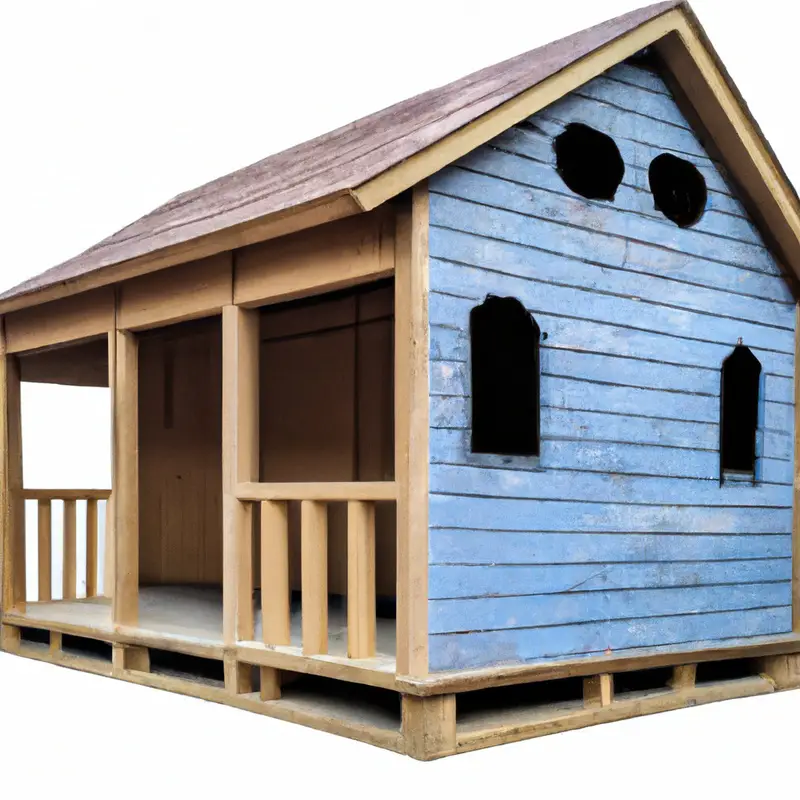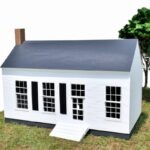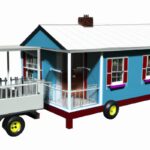Key Takeaways:
- Online directories and forums are excellent resources for finding tiny house communities and co-housing options.
- Local meetups and workshops can connect you with like-minded individuals and potential community members.
- Research zoning regulations and building codes in your area to ensure the feasibility of starting or joining a tiny house community.
- Collaborating with others can help reduce costs and create a stronger sense of community in a co-housing arrangement.
Are you tired of the traditional housing options and looking for something more unique and community-oriented?
Well, look no further! In this article, I’ll guide you through the fascinating world of Tiny House communities and co-housing options.
Whether you’re interested in downsizing to a Tiny House or craving a strong sense of community, these alternative housing choices might be just what you’re looking for.
But how do you find these hidden gems?
Don’t worry, I’ve got you covered.
From online resources to attending festivals, I’ll walk you through the steps to help you find your dream Tiny House community or co-housing option.
Let’s get started!
Option | Description |
Online platforms | Explore websites such as Tiny House Community, Tiny House Finder, or Co-Housing Directory to discover existing communities or co-housing options. |
Social media groups | Join Tiny House or Co-Housing groups on platforms like Facebook, Reddit, or Meetup to connect with like-minded individuals and find community recommendations. |
Real estate websites | Search popular real estate websites like Zillow or Realtor.com and use specific search filters to find tiny house-friendly communities or co-housing options. |
Local zoning regulations | Check local zoning regulations or contact your local planning department to find out if there are any existing tiny house communities or co-housing options in your area. |
Attend tiny house events | Participate in tiny house festivals, conferences, or workshops where you can meet fellow enthusiasts and learn about existing communities or co-housing opportunities. |
What are Tiny House communities and co-housing options?
Defining Tiny House communities
Tiny House communities are residential neighborhoods where people choose to live in small, often portable, and eco-friendly homes.
These communities are designed to promote sustainable living, minimalism, and a sense of community.
Residents typically have access to shared facilities and resources, such as community gardens, common spaces, and eco-friendly amenities.
Tiny House communities offer an opportunity for individuals to downsize their living spaces, reduce their environmental footprint, and connect with like-minded neighbors.
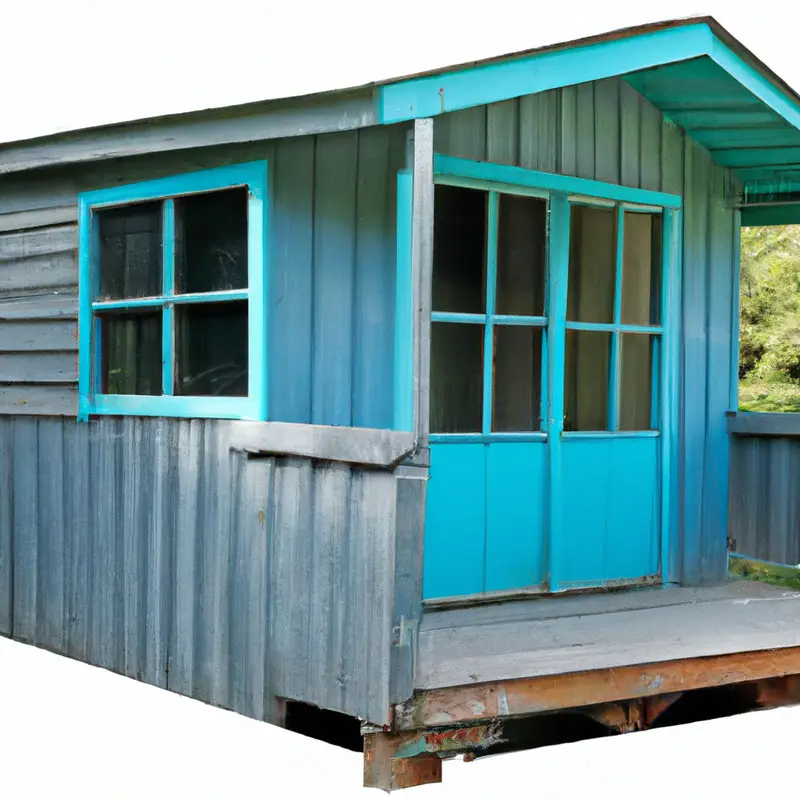
Explaining co-housing options
Co-housing options are a type of collaborative living arrangement where individuals or families have their own private homes but also share common spaces and activities with their neighbors.
This can include shared facilities like kitchens, gardens, and recreational areas.
It promotes a sense of community and cooperation, where residents work together to make decisions and maintain their living environment.
Co-housing options can offer a more sustainable and socially connected lifestyle, with opportunities for shared resources, support, and friendships.
It’s all about finding a balance between independent living and community engagement.
Factors to consider when searching for Tiny House communities or co-housing options
Location and proximity to amenities
When searching for Tiny House communities or co-housing options, the location and proximity to amenities play a significant role.
Living in a community that is conveniently located near essential amenities such as grocery stores, healthcare facilities, schools, and entertainment options can greatly enhance your quality of life.
Consider the distance and accessibility of these amenities to ensure that they are within a reasonable distance from the community.
Being close to amenities can make daily tasks more convenient and ensure that you have easy access to the necessities of life.

Community atmosphere and values
When considering Tiny House communities or co-housing options, one important factor to consider is the community atmosphere and values. It’s vital to find a community that aligns with your own values and offers a supportive and inclusive atmosphere.
Take the time to research and visit potential communities, and consider factors such as shared decision-making processes, expectations for community participation, and the overall vibe of the community.
Additionally, look for a community that shares similar values in terms of sustainability, environmental stewardship, and social connections.
Cost considerations
When considering Tiny House communities or co-housing options, it is important to take cost into consideration. Here are a few factors to keep in mind:
- Initial Investment: Determine the cost of purchasing or building your own tiny house, as well as any necessary permits or fees associated with living in a specific community.
- Monthly Expenses: Consider the ongoing costs such as rent or mortgage payments, utilities, maintenance, and shared expenses within the community.
- Affordability: Make sure the overall cost aligns with your budget and financial goals, taking into account your income, savings, and any potential changes in financial circumstances.
- Additional Services: Some communities may offer additional services like shared amenities, co-working spaces, or communal meals, which might come at an extra cost. Assess if these services are necessary or add value to your lifestyle.
- Future Expenses: Anticipate any potential future expenses, such as upgrades to your tiny house or changes in the community’s rules or regulations, that may impact your finances.
Remember, it’s essential to evaluate the cost considerations alongside other factors like location, community values, and access to shared resources to make an informed decision.
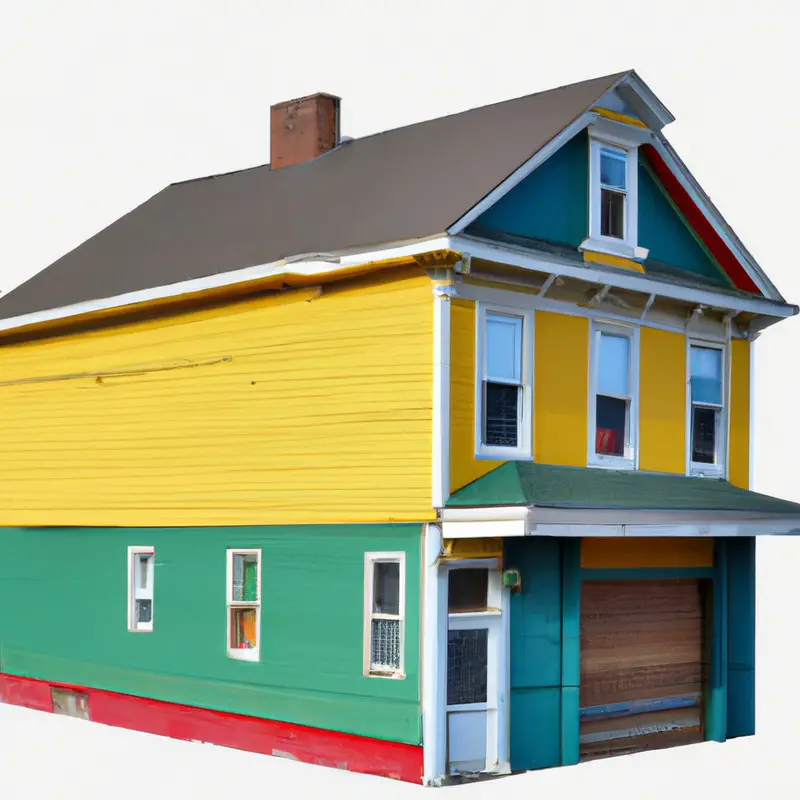
Access to shared facilities and resources
Access to shared facilities and resources is an important consideration when searching for Tiny House communities or co-housing options.
These shared spaces can enhance your living experience and provide you with amenities that might be difficult to have in a standalone Tiny House.
Shared facilities could include common areas, gardens, kitchens, laundry facilities, and recreational spaces.
Additionally, co-housing options often offer shared tools, equipment, and resources that can help minimize costs and increase efficiency.
It’s essential to evaluate the availability and quality of these shared resources before deciding on a community or co-housing option.
How to find Tiny House communities or co-housing options
Online resources and directories
When looking for Tiny House communities or co-housing options, online resources and directories can be a valuable tool.
They provide a convenient way to search for communities based on location, amenities, and specific preferences.
Websites like Tiny House Community and CoHousing.org offer comprehensive listings of existing communities and co-housing options.
These platforms often include detailed information about each community, such as cost, rules, and available facilities.
Additionally, social media groups and forums dedicated to tiny living can provide insights and recommendations from people who have already explored these options.
Joining relevant social media groups and forums
Joining relevant social media groups and forums is a great way to connect with others who are interested in tiny house communities or co-housing options. These online communities provide a platform for sharing resources, asking questions, and finding like-minded individuals.
You can start by searching for Facebook groups, Reddit communities, or forums dedicated to tiny house living.
Engage in discussions, seek advice, and build connections with people who have similar goals and interests. Remember to respect the guidelines of the group and contribute positively to the community.
Attending Tiny House festivals and events
Attending Tiny House festivals and events can be an excellent way to connect with like-minded individuals and learn more about the world of tiny living. These gatherings often feature a wide range of tiny houses on display, allowing you to explore different designs and styles.
Additionally, you’ll have the opportunity to attend workshops, listen to informative speakers, and engage in discussions about tiny house living.
It’s a great way to gather inspiration, gain knowledge, and build a network within the tiny house community.
Connecting with local government or housing organizations
To connect with local government or housing organizations for information on Tiny House communities or co-housing options, there are a few steps you can take.
- Start by reaching out to your local city or town hall. They can provide you with information on any existing or planned Tiny House communities or co-housing options in the area.
- You can also contact housing organizations or nonprofits that specialize in alternative housing options. They often have resources or can direct you to the right places to find more information.
- Don’t forget to attend community meetings or housing fairs in your area. These events often include representatives from local government or housing organizations who can answer questions and provide guidance on finding suitable options.
By taking these steps, you can connect with the right people and organizations to gather information and resources for finding Tiny House communities or co-housing options in your area.
Questions to ask and considerations before joining a Tiny House community or co-housing option
Rules and regulations within the community
When considering joining a Tiny House community or co-housing option, it’s important to be aware of the rules and regulations within the community. These guidelines are put in place to ensure that everyone respects the shared space and lives harmoniously.
Rules may vary depending on the specific community, but common regulations often cover areas such as noise restrictions, pet policies, maintenance responsibilities, and eco-friendly practices.
Familiarize yourself with these rules before joining to ensure that they align with your values and lifestyle.
Financial commitments and responsibilities
Let’s talk about the financial commitments and responsibilities when considering joining a Tiny House community or co-housing option. One important aspect to consider is the initial cost of purchasing or building your tiny house.
You’ll also have ongoing expenses such as utilities, maintenance, and insurance.
Additionally, many communities have monthly or annual fees for shared resources and amenities. It’s crucial to understand the financial obligations associated with the community and ensure they align with your budget and financial goals.
Remember to carefully review the financial commitments and responsibilities before making any decisions.
Level of involvement and participation expected
In a Tiny House community or co-housing option, the level of involvement and participation expected can vary.
It’s important to consider your own preferences and commitment level.
Some communities may require active participation in decision-making, communal activities, and maintenance tasks.
Others may have more flexibility, allowing members to participate as they choose.
Before joining, inquire about the community’s expectations regarding participation in meetings, events, and shared responsibilities.
Evaluating the level of involvement can help ensure a good fit and a fulfilling experience in your chosen community.
Compatibility with the existing community members
When considering joining a Tiny House community or co-housing option, it’s important to consider your compatibility with the existing community members. Take some time to understand the values, interests, and lifestyle choices of the community.
Are their values aligned with yours?
Do they prioritize sustainability, community involvement, or certain rules and regulations? It’s also worth considering the demographic makeup of the community to ensure that you will feel comfortable and accepted.
Building strong connections and relationships with your neighbors is vital for a successful community living experience.
Advantages and disadvantages of Tiny House communities and co-housing options
Advantages of Tiny House communities
Tiny House communities offer several advantages for individuals seeking a simpler and more sustainable lifestyle.
Firstly, they foster a strong sense of community and provide opportunities for social interaction and collaboration.
Second, living in a Tiny House community often means access to shared resources and facilities, such as gardens, workshops, and communal spaces.
Third, these communities are often located in beautiful natural settings, allowing residents to connect with nature and enjoy a slower pace of life.
Overall, Tiny House communities offer a supportive and environmentally-conscious living environment.
Disadvantages of Tiny House communities
Living in a Tiny House community has its drawbacks.
Here are a few disadvantages to consider:
- Limited space: While the small size of a tiny house can be appealing, it can also be challenging. Storage can become a problem, and finding personal space can be difficult if you’re living in close proximity to others.
- Lack of privacy: In a tight-knit community, privacy can be compromised. You may have less control over who comes and goes, and sharing common areas can lead to potential conflicts or compromising situations.
- Community dynamics: Living in a community means living with a variety of personalities and lifestyles. This can lead to conflicts, disagreements, or difficulties in finding common ground with your neighbors.
- Zoning and legal issues: Tiny houses may not always be accepted or legal in certain areas. Zoning regulations can restrict their placement, limiting your options for community living.
- Limited amenities: Tiny House communities may not offer the same level of amenities and services as traditional neighborhoods. It’s important to consider what facilities and resources are available before committing to a community.
Remember, these disadvantages don’t apply to everyone, and they shouldn’t discourage you from exploring Tiny House communities.
It’s essential to weigh the pros and cons and consider what matters most to you before making a decision.
Advantages of co-housing options
Co-housing options offer several advantages.
Firstly, they promote a sense of community and foster social connections.
Living in close proximity to others allows for collaboration, shared resources, and support networks.
Secondly, co-housing often includes shared facilities such as gardens, common areas, or workshops, which increase the available space for residents.
Additionally, co-housing can provide a more sustainable and environmentally friendly lifestyle through shared utilities and reduced resource consumption.
Overall, co-housing options create a sense of belonging and enable a more collective and connected way of living.
Disadvantages of co-housing options
Living in a co-housing community can have its drawbacks. Here are some disadvantages to consider:
- Loss of privacy: Co-housing often involves sharing common spaces and facilities, which means you may have less privacy compared to living in a standalone house or apartment.
- Compromises in decision-making: In a co-housing community, decisions are made collectively, which can sometimes lead to disagreements and compromises that may not align with your personal preferences.
- Potential conflicts: Living in close proximity to others means there is a higher chance of conflicts arising. Differences in lifestyle choices, noise levels, and general disagreements can create tension within the community.
- Limited personal space: Co-housing usually involves smaller living spaces to accommodate more people. This may require downsizing and adjusting to a more compact lifestyle.
- Financial obligations: While co-housing can be cost-effective in terms of shared resources, you may still have financial responsibilities such as monthly fees or contributions towards maintenance and repairs.
It’s important to carefully weigh these disadvantages against the potential benefits before deciding to join a co-housing community.
Alternative options to consider if Tiny House communities or co-housing options are not available
Renting land or backyard space
Renting land or backyard space is a viable option if you can’t find a Tiny House community or co-housing option.
Many homeowners are open to renting out their land or backyard to Tiny House dwellers.
You can search for available spaces through online platforms, social media groups, or local classifieds.
Before renting, make sure to clarify the terms of the agreement, such as lease duration, utilities, and any restrictions on your Tiny House.
It’s also important to establish a good relationship with the landowner and be respectful of their property.
Joining an intentional community or ecovillage
Joining an intentional community or ecovillage is another option if you can’t find a Tiny House community or co-housing option.
These communities prioritize sustainable living, shared resources, and a strong sense of community.
To find these communities, you can search online directories or connect with relevant social media groups.
Attending events or reaching out to local government or housing organizations can also lead you to these communities.
Before joining, consider the community’s values, rules, financial commitments, and level of involvement.
It’s important to ensure compatibility with existing members.
Creating your own Tiny House community or co-housing option
Creating your own Tiny House community or co-housing option allows you to have more control over the living arrangements and the people you want to live with.
Here are a few steps to consider:
- Find like-minded individuals: Start by connecting with others who are interested in tiny houses or co-housing. You can join online communities or attend local events and workshops to meet potential members.
- Define your shared values and goals: It’s crucial to have a shared vision and purpose for your community. Discuss and agree on important aspects such as sustainability, shared resources, and community participation.
- Determine the size and location: Decide on the number of houses and the location for your community. Consider factors like accessibility, proximity to amenities, and local zoning laws.
- Develop community agreements and guidelines: Establish rules and guidelines for living together harmoniously. This includes decisions about shared expenses, decision-making processes, and community responsibilities.
- Collaborate on the design and construction: Work together to design and build your tiny houses. This not only saves costs but also fosters a sense of community and shared ownership.
- Create shared spaces and amenities: Plan and develop shared spaces like a community garden, common room, or workshop area to encourage interaction and cooperation among community members.
- Regular communication and community maintenance: Maintain regular communication with community members to address any concerns, make decisions collectively, and ensure the smooth functioning of the community.
Remember, creating your own tiny house community or co-housing option requires dedication, cooperation, and open communication among its members.
It can be a rewarding and fulfilling way to live, providing a sense of belonging and a supportive network.
Happy community building!
Final Verdict
Finding Tiny House communities or co-housing options can be an exciting and fulfilling endeavor. By considering factors such as location, community values, cost, and access to shared resources, individuals can make an informed decision on where to settle.
Utilizing online resources, engaging in social media groups and forums, attending events, and connecting with local government or housing organizations are effective ways to find these communities.
It is essential to ask questions about rules and regulations, financial commitments, level of involvement, and compatibility before joining. While there are advantages and disadvantages to both Tiny House communities and co-housing options, these alternative living arrangements offer a unique way to foster community and sustainable living.
If these options are not available, individuals can explore renting land or backyard space, joining intentional communities or ecovillages, or even creating their own Tiny House community or co-housing option.
Overall, finding the right Tiny House community or co-housing option requires careful consideration and research, but the rewards of living in a supportive and environmentally-conscious community are well worth it.
